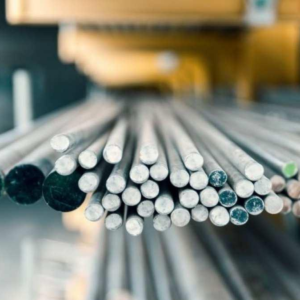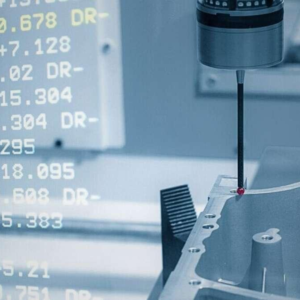When choosing the right hole type for a project you might get confused between tapped holes and threaded holes. They must be understood well for the correct size and application can be achieved in mechanical components. They are both useful for specific functions, and hole types, and their location affects strength, assembly, and performance. Tapped holes are made directly to be used with screws and are known as a convenient way of fastening. However, threaded holes are usually intended to accept nuts or bolts.
In this article, you will find out the differences between tapped and threaded holes, and the tips to select the most suitable type for your application.
What Is Tapping?
Tapping is a machining technique in which screw threads are directly cut into a pre-tapped hole so that the hole is made to receive a threaded fastener or other related hardware. There is an instrument known as the tap typically fitted with helical flutes for cutting threads into such materials as metal and plastic. The nominal size of the tapped hole is stated by the size of the tap used normally in inches or millimeters. The formula to calculate the drill size for tapping is:
Drill Size = Nominal Size − Pitch
Where:
- Nominal size is known as the required size of the threaded hole.
- The pitch determines the distance between threads and usually depends on the tap type.
Tapping can be done through several techniques; hand tapping for small-scale projects or power tapping for large-scale industrial projects. Machine tapping may employ a tapping cycle that sets a spindle speed and a feed rate to maximize process accuracy.
Factors in tapping include choosing the right material for the tap, for example, the high-speed steel (HSS) and carbide, and, oil lubricants. Correct tapping methods and calculations are critical when it comes to creating correct thread profiles to guarantee the stability of the joined components.
What Is Threading?
Threading refers to the manufacturing process in which threads are cut on a cylindrical workpiece to make external or internal threads. It allows components to be joined using bolts, nuts, or screws by assuring a tight and strong connection. The process of threading can be done by cutting, rolling, or chasing.
In cutting, a lathe machine is widely used, where a cutting tool is used to remove material to create the thread profile. The nominal size of the threaded component refers to the diameter and pitch of the thread of the component in question.
The formula for calculating the pitch of a threaded component is:
Pitch= 1/Threads per Inch (TPI)
Where:
- Threads per Inch (TPI) indicates the number of threads within an inch.
Rolling is another threading method used in producing large numbers of fasteners at a time. In this technique, the material is bent to form threads without having to cut through any material. Thus the threads formed are stronger than the base material due to work hardening.
Threading has to take into account several standards such as the Unified National Thread (UN) or the Metric Thread standards. The tools used, the thread form, and the appropriate selection of materials are significant determinants of precision and reliability in threaded connections.
Differences Between Tapped Holes and Threaded Holes
Here’s a comparison table highlighted:
| Parameter | Tapped Holes | Threaded Holes |
| Machining Method | Utilizes a tap to form internal threads via cutting action. | Employs a die tool to produce external threads through material deformation. |
| Load Capacity | Generally lower tensile strength, suitable for moderate load-bearing applications. | Superior load capacity, designed for high-stress environments and critical connections. |
| Thread Precision | Offers enhanced precision for internal threads, ideal for tight tolerances. | Precision may vary based on tooling and machine calibration, affecting thread engagement. |
| Production Speed | Tapping is typically a quicker process, allowing for rapid thread formation. | Threading may require longer cycle times, particularly for high-precision applications. |
| Operational Efficiency | Less efficient for large-scale manufacturing due to tool changes required for different sizes. | Highly efficient in mass production, particularly with automated threading systems capable of handling multiple sizes. |
| Application Scope | Commonly used in applications requiring removable fasteners, such as electronic enclosures. | Preferred for permanent connections in structural components, automotive assemblies, and critical mechanical applications. |
Similarities & Limitations for Tapped and Threaded Holes
Similarities
Purpose: Both tapped and threaded holes are used to join the components. Meaning that they both offer a way of fastening parts in mechanical structures.
Thread Engagement: Both types use threaded fasteners, screws, or bolts for load flow and stability of structures in construction uses.
Material Compatibility: Both can be made in materials such as; metals, plastics, and composites which makes the applications diverse.
Standards Compliance: Tapped as well as threaded holes can be in compliance with particular standards such as Unified National (UN) or ISO metric standards to maintain compatibility in fastening systems.
Limitations
Load Capacity: Tapped holes may have a lower load-bearing capability than threaded holes, more so in designs that need high shear or tensile strength. Furthermore, threads do not have a deep engagement depth hence many of the threads are produced shallow.
Installation Complexity: The threaded holes may require extra parts like a nut or washer. Therefore they may be more challenging in the assembly and disassembling than the directly tapped holes.
Machining Accuracy: To get increased precision in both the tapping and threading, one has to get correct alignment and machining. Inappropriate machining choices may lead to thread slipping or inadequate engagement.
Material Removal: Tapping removes material to create threads which will always compromise the material strength around it. Moreover, threading may result in material deformation depending on the thread type being used.
Cost Considerations: Frequently, the tapped formation and threaded holes use different tool types in machining so, different tools, tend to incur cost differences. Tapping is usually cheaper compared to threading especially for complex applications. While threading might need more elaborate equipment.
Key Takeaways
Tapped holes are a particular type of threaded hole in which internal threads are produced through a procedure named tapping. The terms “tapped holes” and “threaded holes” are interchangeable.
A drilled hole is a cylindrical hole, and or cavity that has polished inner walls due to the material removal. On the other hand, tapped holes have complex internal screw threads that give room for the fastening of the components.
If you have any custom CNC part manufacturing needs, Tops Precision is ready to help you. We are experts in machining tapped holes in several materials, making it easy for you to source several custom parts as we adopt efficient techniques.
At Tops Precision, we provide you with the opportunity to focus on the engineering you do – your designs. Join our community now and submit your part to learn how our fast quoting tool works, get insights into manufacturability, and see what our powerful platform can do for you.
Frequently Asked Questions
Q1. What materials are best suited for tapping and threading?
Tapping is most effective with harder materials such as steel and aluminum, it can handle the cutting force well. Threading can be done on a wider material type such as softer metals and plastics depending on the intended approach.
Q2. How do I choose the right tap size for my application?
The tap size should match the nominal diameter of the screw or bolt being used. Use the formula: Drill Size=Nominal Size−Pitch to ensure proper thread engagement.
Q3. In which industries are tapped and threaded holes commonly used?
Tapped holes vs threaded holes are used in automotive, aerospace, machinery, construction industries, electronics industries, and medical industries as well. They play critical roles in the protection of the assembled components as well as in the structural support.
Q4. Why are tapped holes useful in electronic appliances?
Tapped holes are useful in the mounting of circuit boards and components in electronic boxes. This design also makes it easier to install and dismantle this design so that maintenance and upgrading are relatively easier.




1 thought on “Tapped Holes Vs. Threaded Holes: Know The Difference”